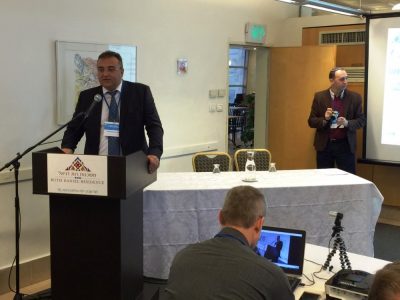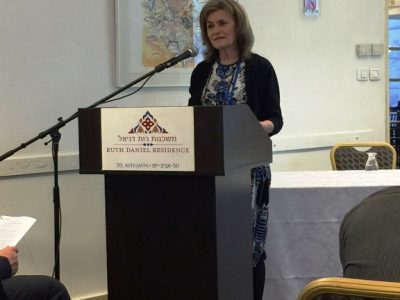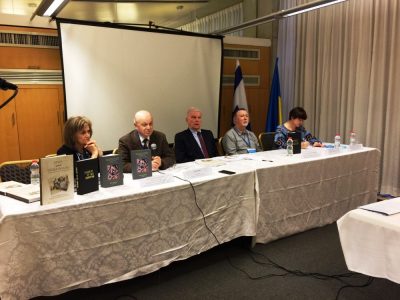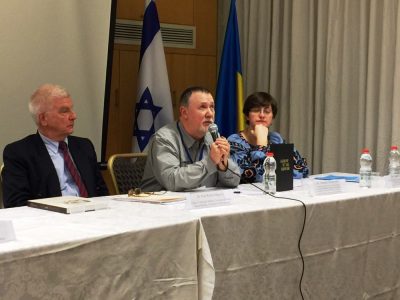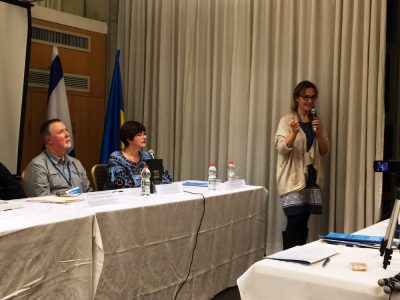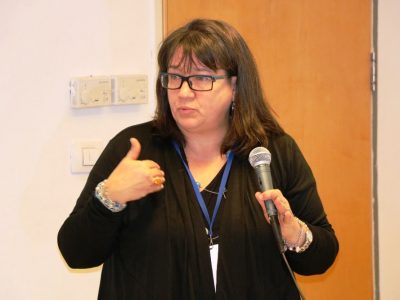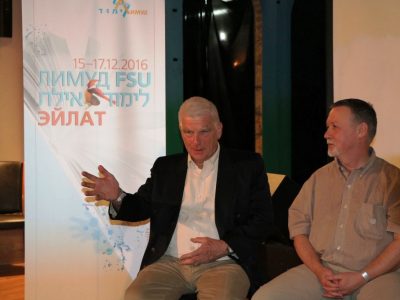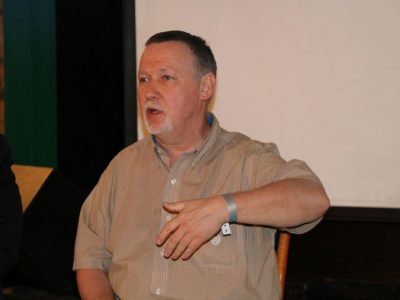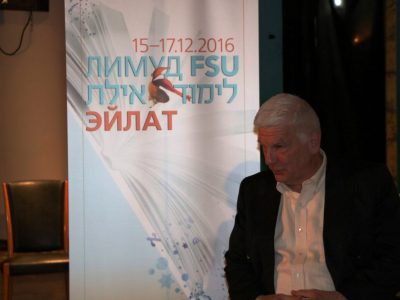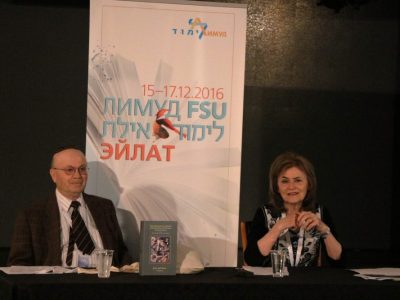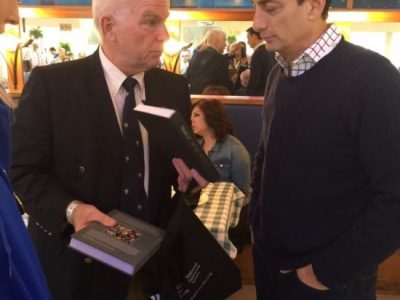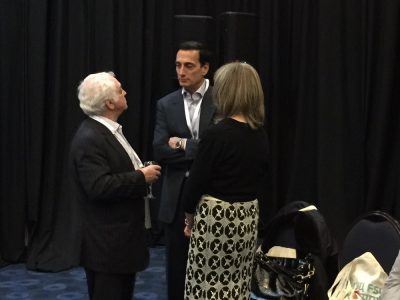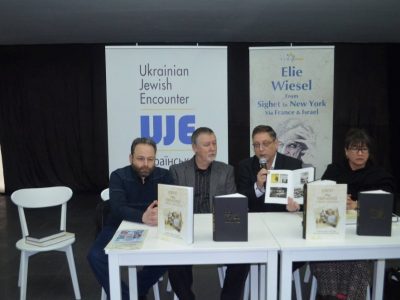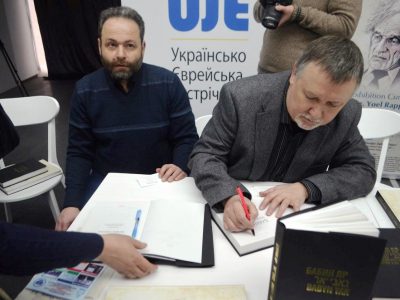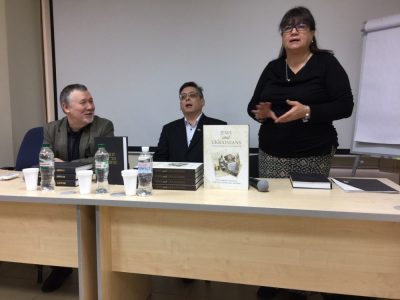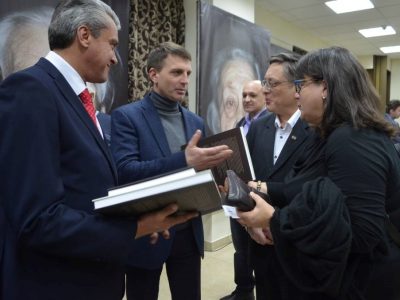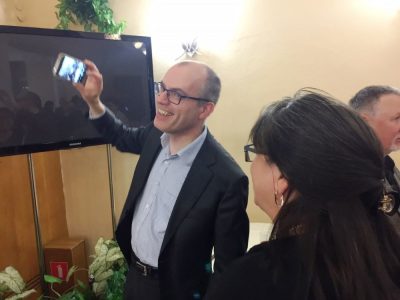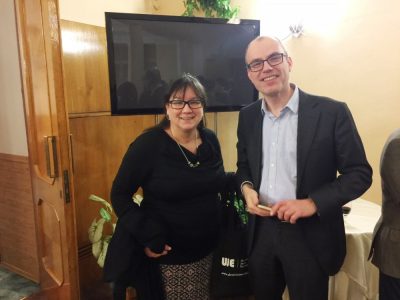Two Thousand Years of Ukrainian-Jewish Relations Explored in an Exciting Series of New Books
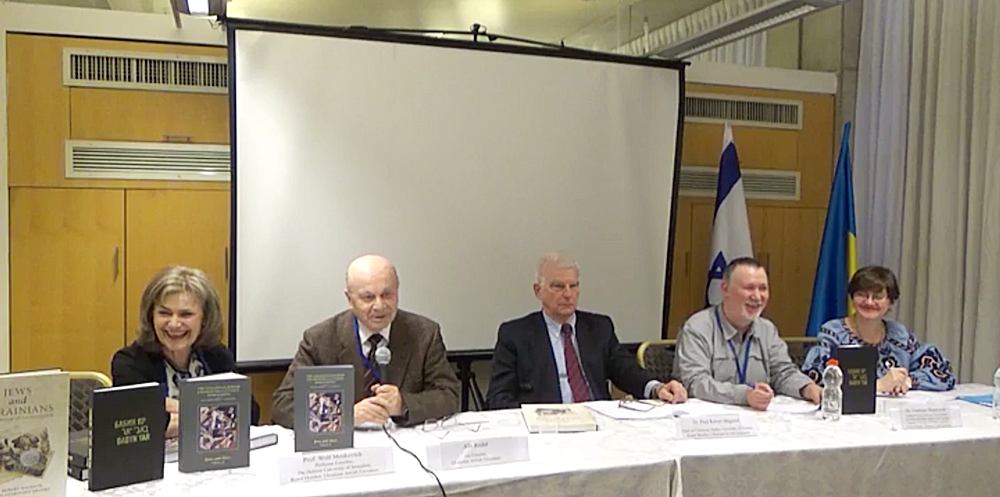
The publication of a series of books supported by the Ukrainian Jewish Encounter have provoked vibrant debates and discussions in recent months as their authors and editors have appeared before engaged audiences at public venues throughout the world.
The books, The Ukrainian-Jewish Encounter: Cultural Dimensions, Babyn Yar: History and Memory, and Jews and Ukrainians: A Millennium of Co-Existence, were all published in 2016. Each volume individually explores often unknown and sometimes surprising chapters in the Ukrainian-Jewish relationship. Collectively, however, these works provide a starting point to better understand proximity and distance in the communal and personal interactions between Jews and Ukrainians, two peoples that for nearly two thousand years have inhabited the vast territory that comprises modern-day Ukraine.
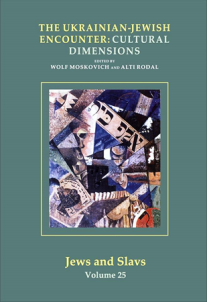 The Ukrainian-Jewish Encounter: Cultural Dimensions is based on presentations given at a UJE-sponsored conference in Jerusalem in 2010, which brought together leading scholars to explore aspects of Ukrainian-Jewish cultural interaction, mutual representation, and memory.
The Ukrainian-Jewish Encounter: Cultural Dimensions is based on presentations given at a UJE-sponsored conference in Jerusalem in 2010, which brought together leading scholars to explore aspects of Ukrainian-Jewish cultural interaction, mutual representation, and memory.
Co-edited by Wolf Moskovich, Professor Emeritus of the Hebrew University of Jerusalem and UJE board member, and UJE Co-Director Alti Rodal, the book investigates the complex and varied cultural interaction between the Ukrainian and Jewish communities from the seventeenth century to the present. The book appears as Volume 25 in the series Jews and Slavs, which has been published by the Hebrew University of Jerusalem since 1993. The goal of the series has been to deepen understanding of the relationship between the Jewish and Slavic peoples. Five volumes in the series have been dedicated to Ukraine.
The book was presented at two conferences recently in Israel. The co-editors underlined the importance that culture played in the relationships between the Ukrainian and Jewish communities. Cross-cultural influences have long been evident, both in the religious and secular spheres, in art, architecture, music, folklore, and language.
“A central premise of this collection of essays is that a focus on culture illuminates important aspects of the Ukrainian-Jewish relationship generally missed in political and historical accounts that tend to leap from crisis to crisis,” Rodal noted in introducing the volume. “Cultural interaction unfolded over time through daily, diverse, and localized encounters that had an enduring impact on both communities.”
In literature, Ukrainian writers depicted the daily routines and peculiarities of their ethnic counterparts, as well as those of Jews. Yet significantly impacting their works was the Bible and biblical motifs, both given to them by the Jews, said Moskovich.
“The sons of Ukraine have made a very substantive input into world culture and among the culture of the Jews,” he said. “As for Jewish input into Ukrainian culture, the most important thing is the fact that the Jewish people gave the Bible to the world and you will find in this series of books descriptions of works of Ukrainian literature that are based on Biblical motifs. The most important Ukrainian writers, such as Taras Shevchenko, Ivan Franko, and Lesia Ukrainka wrote outstanding works where the heroes were the Jews of Biblical times. Jews gave to the Christian world the Bible and the Old Testament. And among the nations that received this heritage were Ukrainians, who built the basis of their classical literature and culture on Biblical images.”
Moskovich noted that the book addresses the cultural interaction of Ukrainians and Jews not only in early periods but also particularly in the nineteenth and twentieth centuries.
One of the great cultural figures of the twentieth century who impacted both Ukrainians and Jews was the Kyiv-born Ukrainian artist Alexander Archipenko. A master of Cubism, Archipenko became known for his unique style, referred to as sculpto-painting. Moskovich noted that the Tel Aviv Museum of Art hosts one of the world’s largest collections of Archipenko's work.
“Culture,” said Rodal, “shapes so many key aspects of life, develops over long stretches of time, and brings to light the long periods of normal coexistence, the broader context in which these cultures developed, and the complexity and multifaceted nature of the relationship.”
At the same time, she noted the importance of acknowledging the tragic episodes in the Ukrainian-Jewish relationship in the past in order to open avenues for strengthened mutual trust and understanding in the future.
Tel Aviv Gallery
The editors of the book Babyn Yar: History and Memory and the co-authors of Jews and Ukrainians: A Millennium of Co-Existence have addressed issues relating to painful aspects of the Ukrainian-Jewish relationship in the past in a number of panel discussions that have taken place in North America, Ukraine, and Israel about historic memory in Ukraine.
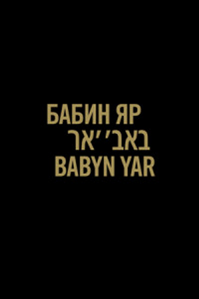 Babyn Yar: History and Memory is a volume of essays by distinguished Ukrainian and Western scholars. The volume was co-edited by Vladyslav Hrynevcyh of Ukraine’s National Academy of Sciences and UJE board member and academic council member Paul Robert Magocsi, Chair of Ukrainian Studies at the University of Toronto. It was published in conjunction with the seventy-fifth anniversary of Babyn Yar as part of UJE’s Babyn Yar commemorative program that took place in Kyiv from 23-29 September 2016.
Babyn Yar: History and Memory is a volume of essays by distinguished Ukrainian and Western scholars. The volume was co-edited by Vladyslav Hrynevcyh of Ukraine’s National Academy of Sciences and UJE board member and academic council member Paul Robert Magocsi, Chair of Ukrainian Studies at the University of Toronto. It was published in conjunction with the seventy-fifth anniversary of Babyn Yar as part of UJE’s Babyn Yar commemorative program that took place in Kyiv from 23-29 September 2016.
Magocsi also co-authored Jews and Ukrainians: A Millennium of Co-Existence with Yohanan Petrovsky-Shtern, who is Crown Family Professor of Jewish Studies at Northwestern University and a UJE academic council member.
At a panel that featured both books at Israel’s Limmud FSU conference in Eilat in December 2016, Hrynevych noted that generally there must be a greater awareness of what is still a relatively unknown chapter in the destruction of Europe’s Jews during World War II—the “Holocaust by Bullets.”
Unlike in Poland, where the majority of Jews were murdered in gas chambers, some 1.5 million Jews perished in fields and ravines, shot to death by Nazis, sometimes with the assistance of local collaborators, on the territory of what is contemporary Ukraine. The most notorious symbol of this type of killing is Babyn Yar, a ravine in Kyiv where nearly 34,000 Jews were murdered on 29-30 September 1941. Additional killings occurred at Babyn Yar throughout the German occupation, but the sheer mass and brutality of those two days still haunts the city's residents.
“Two totalitarian regimes tried to destroy Jews on the territory of Ukraine,” Hrynevych said. While Hitler attempted to annihilate the Jews, “the Soviet regime tried to erase the memory of that tragedy.”
As for the current situation in Ukraine, “it’s impossible to say that all the research has ended,” he said. “There are still a great many questions, doubts, and conflicted questions…The important thing here is that this book is not only a history of Babyn Yar but also an account of what happened in the politics of memory and of culture.”
Hrynevych noted that Ukrainians as early as 1945 tried to keep the memory of Babyn Yar alive, efforts that continued throughout the Soviet period in art, music, theatre, and oral history. Particularly important was the cooperation between Ukrainian and Jewish intellectuals who gathered at Babyn Yar on anniversaries to remember the destruction of Kyiv’s Jewish community.
Eilat Gallery
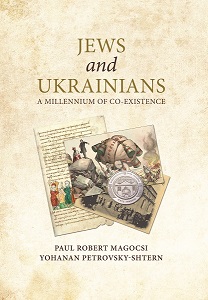 In introducing Jews and Ukrainians: A Millennium of Co-Existence Petrovsky-Shtern noted that a new era in Ukrainian-Jewish relations commenced on 29 September 1966, the twenty-fifth anniversary of Babyn Yar.
In introducing Jews and Ukrainians: A Millennium of Co-Existence Petrovsky-Shtern noted that a new era in Ukrainian-Jewish relations commenced on 29 September 1966, the twenty-fifth anniversary of Babyn Yar.
On that day, the Ukrainian writer Ivan Dziuba and a handful of Ukrainian intellectuals came to Babyn Yar to commemorate the anniversary with the Jewish community, which gathered illegally at the ravine. Addressing those present, Dziuba said that historically many Ukrainian and Jewish writers had tried to view each other’s experiences as their own.
For the Jewish community, “seeing before them a Ukrainian dissident, without doubt a nationalist, but a democratic nationalist…for Ukrainian-Jewish relations this was explosive.”
Petrovsky-Shtern noted that people at the gathering repeated what Dziuba had said and the text of his speech circulated around Kyiv for days. The writer was eventually questioned by the KGB, the Soviet secret police, but was not incarcerated.
Fifty years after his impressive speech at Babyn Yar, on 29 September 2016, Dziuba was presented with the Metropolitan Andrei Sheptytsky Award at a ceremony in Kyiv, Ukraine.
Placing issues like the Dziuba episode at Babyn Yar into historical perspective, and countering centuries-old stereotypes, were just several of the factors in writing Jews and Ukrainians: A Millennium of Co-Existence.
“We can speak about history, about the past, we have to remember, but who should remember that?” asked Magocsi. “Those who lived in those times, or youth, which is very [dis]interested in the past, or know little about the past? We are thinking about future generations, because for us this is most important.”
He said the publications will not only put to rest some of the issues that have worried both communities, but that their content is of interest and a lesson to a larger global audience.
“We live in the twenty-first century,” he said. “Already there are two independent countries, Israel and Ukraine. Of course, we have to remember about the past, but we mostly have to think about the present and the future. Because if a man falls into stereotypes of the past, he can never move forward. So we can say we created these books to perhaps finish this process about thinking about the past, and plan for a future where every person thinks without stereotypes and can engage the problems of the present and the future.”
UJE’s global book tour program began in September of 2016 with a presentation of “Jews and Ukrainians: A Millennium of Co-Existence” at the Lviv Book Forum in Ukraine. The Forum’s director Oleksandra Koval honored the book with a special award. Additional book presentations were organized in Toronto, New York, and the Ukrainian cities of Uman, Zaporizhzhya, Kyiv, and Dnipro. UJE will present a series of reports from the tour.
Uman, Ukraine Gallery
Magocsi will next appear with the books in a discussion at the Limmud FSU Canada conference that will take place at Blue Mountain Resort from 24-26 March.
[Note: Though these publications benefited from funding provided by UJE as well as the Government of Canada, the views expressed by the authors and editors do not necessarily reflect the views of UJE or the Government of Canada.]
UJE Historical Memory Panel Eilat
UJE Cultural Dimensions Presentation Eilat
Opening Tel Aviv Conference
Book Presentations Tel Aviv
Book Presentation Uman, Ukraine







